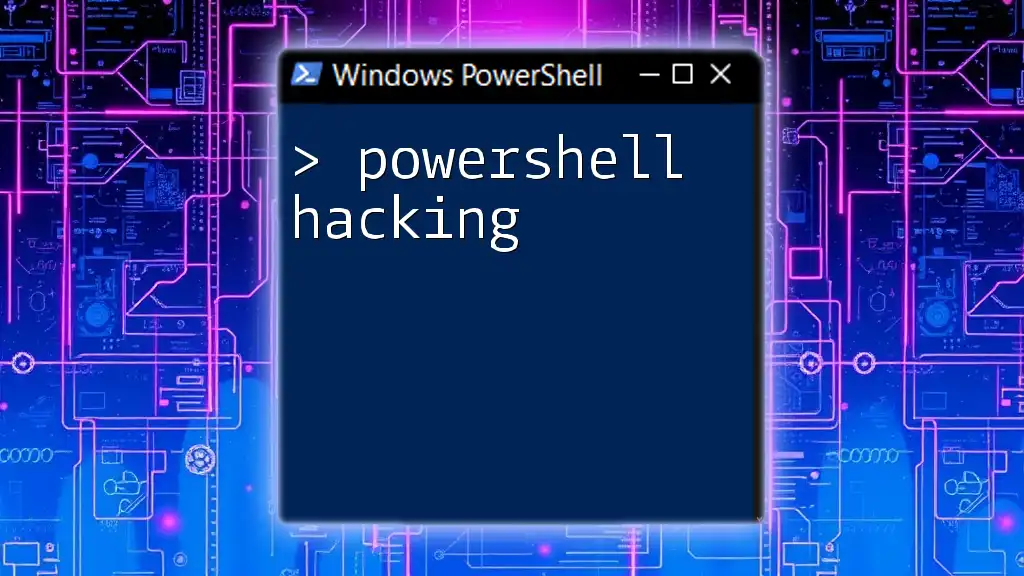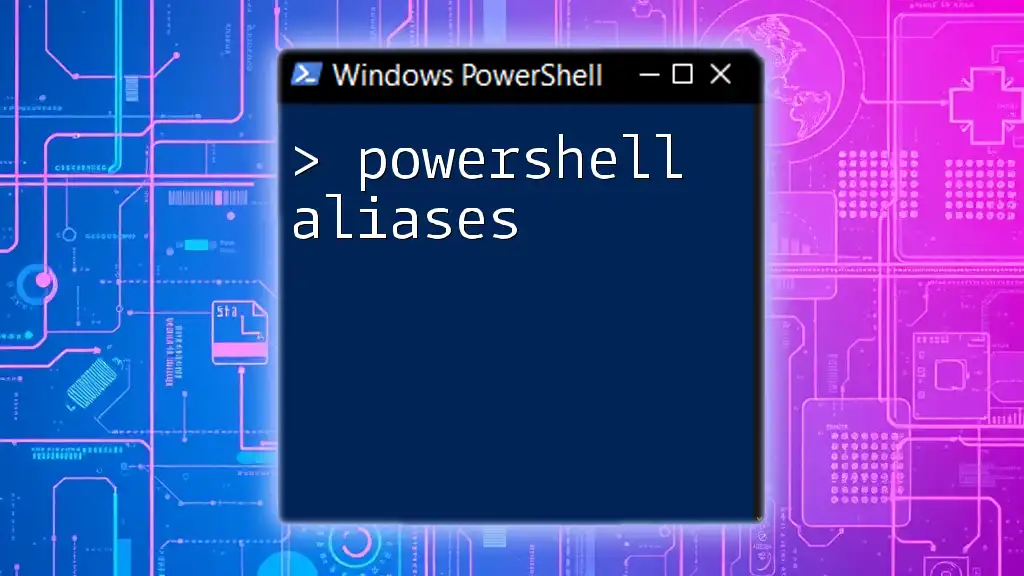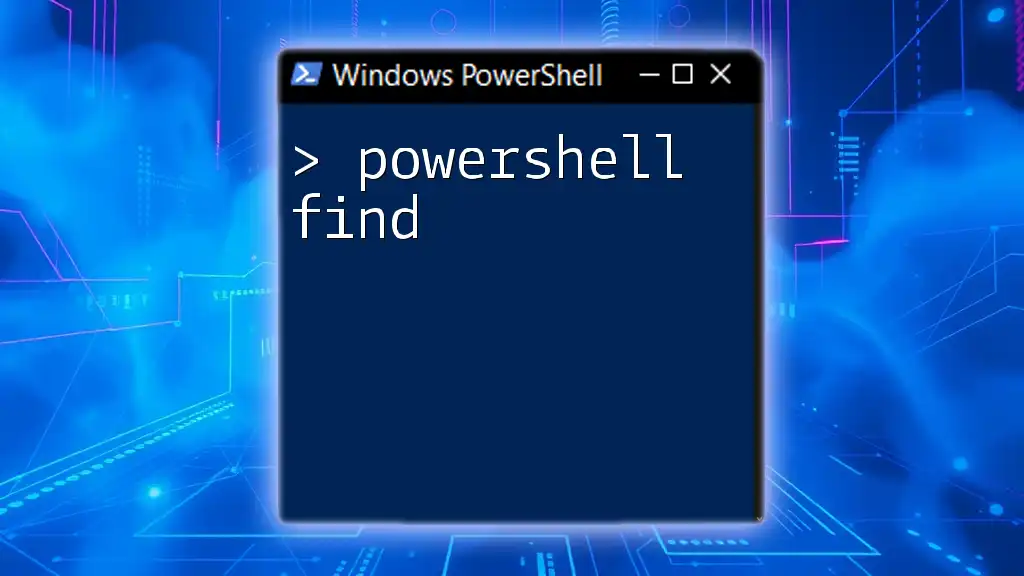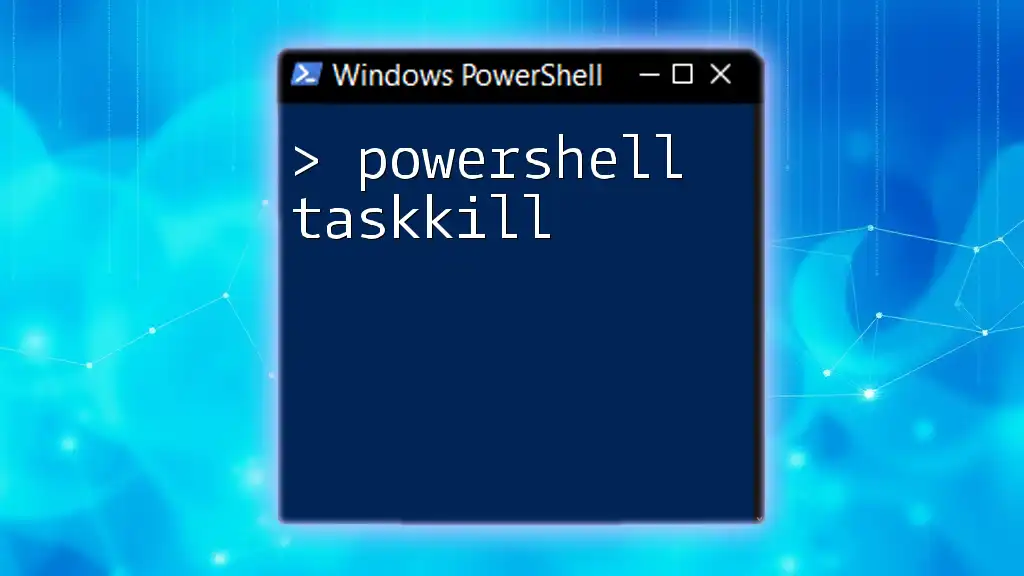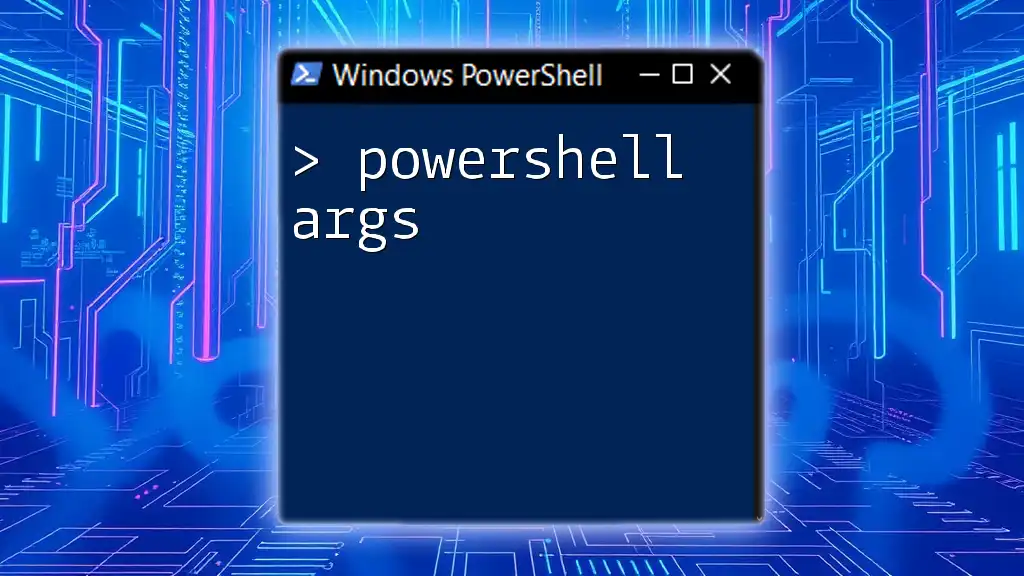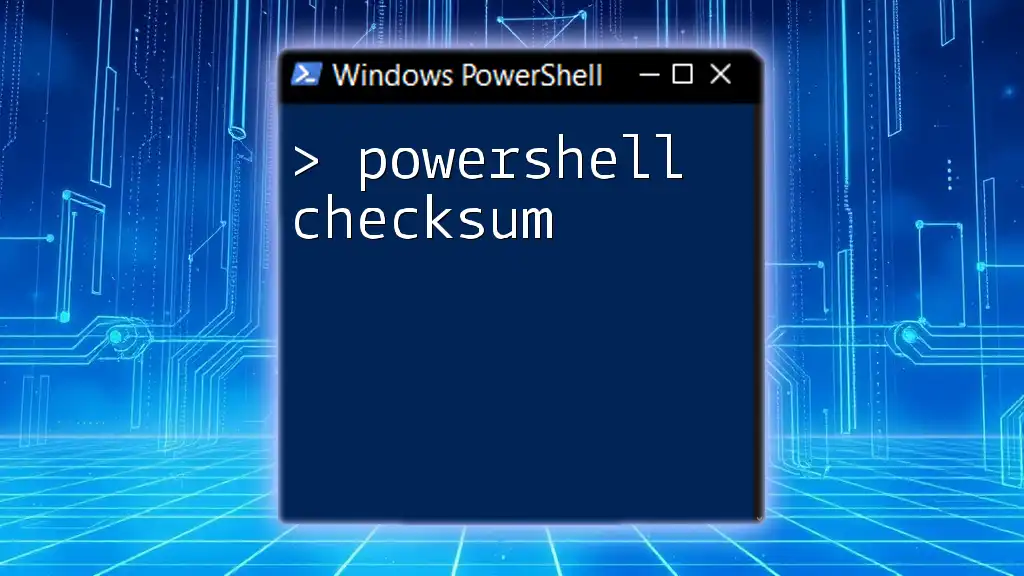PowerShell hacking refers to the use of PowerShell commands to automate tasks, simplify system administration, and perform security assessments within a Windows environment.
Here’s a simple code snippet to demonstrate how you can retrieve system information using PowerShell:
Get-ComputerInfo
What is PowerShell Hacking?
PowerShell hacking refers to the use of PowerShell, a task automation framework developed by Microsoft, for malicious activities or security testing. It plays a crucial role in the field of cybersecurity, especially among ethical hackers who leverage its capabilities to identify vulnerabilities and improve security measures. Understanding how to utilize PowerShell in these contexts not only empowers security professionals but also equips individuals with the knowledge to defend against potential PowerShell-based attacks.
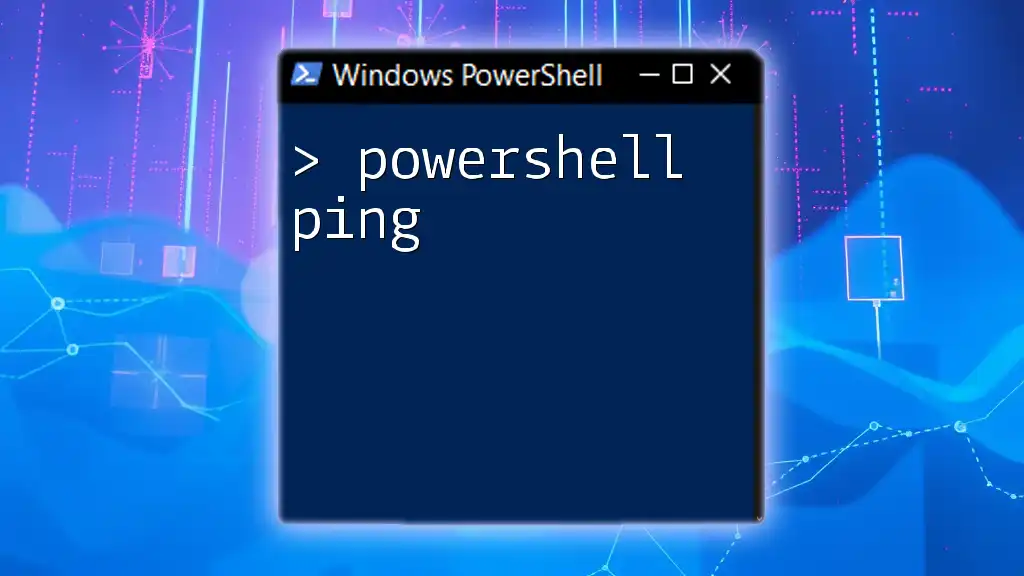
Understanding PowerShell Basics
What is PowerShell?
PowerShell is a powerful command-line shell and scripting language specifically designed for system administration and automation. It integrates seamlessly with .NET and allows users to execute commands (cmdlets), manage system tasks, and automate various administrative processes across different environments.
How PowerShell Works
At its core, PowerShell operates on the concept of cmdlets, which are specialized .NET classes built to perform a single function. These cmdlets can be combined using pipes, allowing output from one cmdlet to serve as the input for the next, creating complex command structures. Additionally, PowerShell works with objects, rather than plain text, making it easier to manipulate and retrieve system information.

The Role of PowerShell in Cybersecurity
PowerShell as a Tool for Ethical Hacking
In the realm of cybersecurity, ethical hackers leverage PowerShell to conduct penetration tests and vulnerability assessments. Understanding PowerShell commands enables ethical hackers to simulate attacks, assess the security posture of systems, and identify weaknesses before malicious actors can exploit them. This proactive approach helps organizations strengthen their defenses.
Real-World Applications of PowerShell in Hacking
PowerShell is often used in real-world hacking scenarios, including but not limited to adversaries who execute scripts for lateral movement within networks, download malicious payloads, or perform reconnaissance on target systems. Several high-profile cyber incidents have involved PowerShell scripts, which underline the importance of robust security measures when it comes to PowerShell usage.

Essential PowerShell Commands for Hacking
Introduction to Cmdlets
PowerShell cmdlets form the backbone of many actions you can perform. Familiarity with various cmdlets, especially those that interact with the file system, processes, and network, is key to effective PowerShell hacking.
Information Gathering Cmdlets
Get-Process
This cmdlet retrieves a list of all processes running on the system. It provides insights into what is active, which can be crucial for identifying malicious processes.
Example: Gathering Running Processes
Code Snippet:
Get-Process
Get-Service
This cmdlet lists all the services on the machine. Understanding which services are running and their status is vital in identifying potentially malicious services.
Example: Listing Services on a System
Code Snippet:
Get-Service
Network Scanning and Enumeration
PowerShell also shines when it comes to network diagnostics.
Using `Test-NetConnection`
This cmdlet checks the connectivity to a specific port on a remote server, effectively serving as a network diagnostic tool.
Example: Checking Connectivity to a URL
Code Snippet:
Test-NetConnection -ComputerName google.com -Port 80
Using `Get-NetTCPConnection`
To identify open ports and active TCP connections on the local machine, you can use this cmdlet. Understanding which ports are open is essential in assessing vulnerabilities.
Code Snippet for Identifying Open Ports
Get-NetTCPConnection
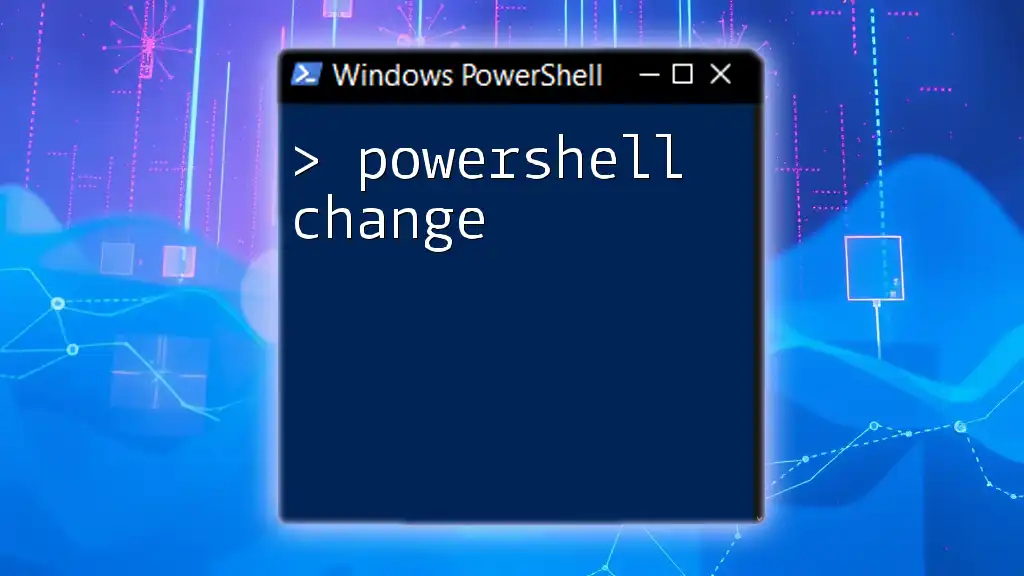
Scripting for Hacking
Understanding PowerShell Scripts
While individual cmdlets provide command-line functionality, scripts enable automation and the execution of layered tasks, making them invaluable for hacking activities.
Creating and Running PowerShell Scripts
PowerShell scripts are comprised of a sequence of cmdlets and programming logic that automate complex tasks.
Example Script:
A simple password enumeration script can help identify user account settings and status.
Code Snippet:
$users = Get-LocalUser
foreach ($user in $users) {
Write-Output "User: $($user.Name) - Password Last Set: $($user.PasswordLastSet)"
}
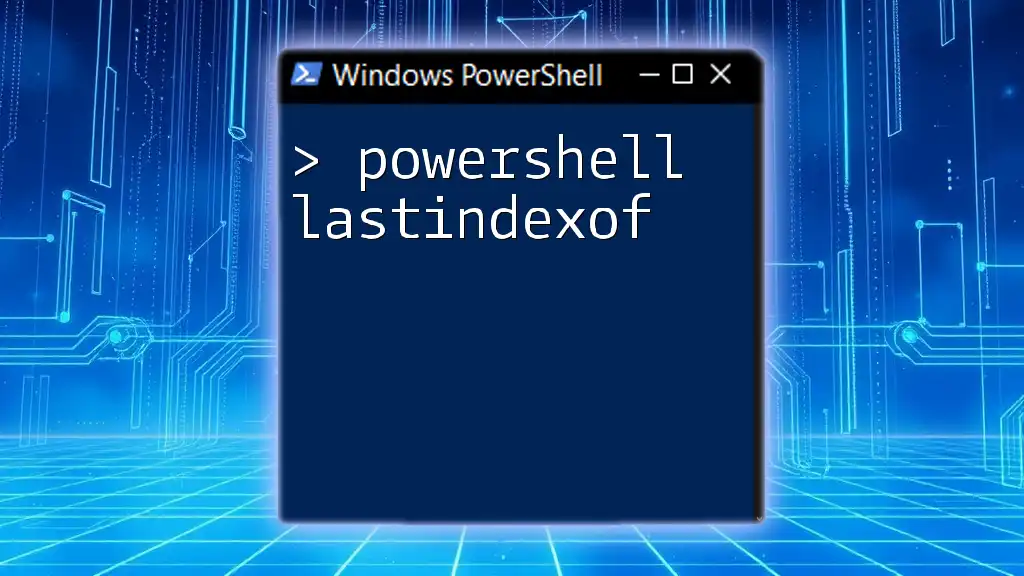
Advanced Techniques for PowerShell Hacking
Bypassing Security Measures
One of the challenges in PowerShell hacking is navigating security measures like execution policies. Skilled attackers often bypass such restrictions to execute scripts.
Example: Bypassing Execution Policy
To temporarily allow PowerShell to run scripts, you can change the execution policy:
Set-ExecutionPolicy Bypass -Scope Process
Remote Access via PowerShell
PowerShell Remoting is another powerful feature that allows administrators and attackers alike to manage remote systems seamlessly.
Entering a Remote Session
Here’s how you would initiate a remote session:
Enter-PSSession -ComputerName TargetMachineName -Credential Domain\UserName
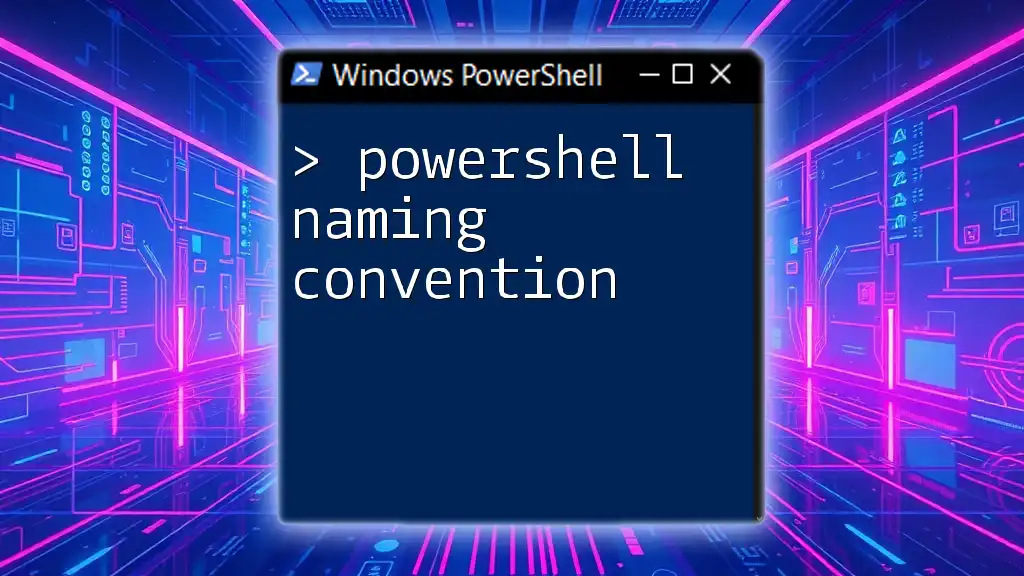
PowerShell for Malware Delivery
Creating Payloads Using PowerShell
Malicious actors often use PowerShell to deliver malware. By crafting scripts and persuading users to execute them, an attacker can gain unauthorized access or execute harmful processes.
Example Payload:
An example of a common tactic is to trick users into executing a script that compromises their system.
Code Snippet:
Start-Process powershell -ArgumentList '-ExecutionPolicy Bypass -File yourscript.ps1'
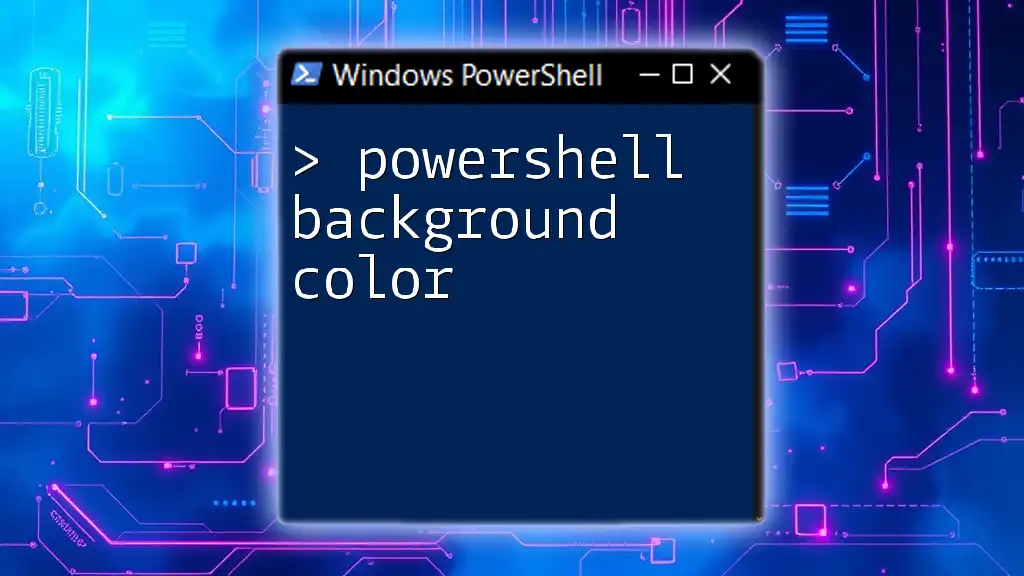
Mitigation and Security Best Practices
Secure PowerShell Usage
To combat the potential misuse of PowerShell, organizations must implement strict access controls. Limiting user permissions and practicing least privilege principles can significantly reduce the risk.
Implementing Logging and Auditing
Enabling logging helps track PowerShell usage and identify suspicious activity.
Enable PowerShell Script Block Logging
Here's how to enable crucial logging features:
Set-Item WSMan:\localhost\Shell\ScriptBlockLogging -Value $true
Regular Updates and Patches
Keeping PowerShell and associated dependencies regularly updated is paramount. Periodic reviews of security policies and infrastructure can help thwart attacks using PowerShell.

Conclusion
Understanding PowerShell hacking is essential for both ethical hackers and organizations looking to protect themselves from cyber threats. As PowerShell continues to be leveraged in several attacks, equipping individuals with the necessary skills to utilize its capabilities responsibly benefits the entire cybersecurity landscape.

FAQs
Common Questions about PowerShell Hacking
What is the legal aspect of PowerShell hacking?
It's crucial to operate within the law. Engaging in hacking activities without explicit authorization is illegal. Always conduct penetration testing and assessments with permission.
How to get started learning PowerShell securely?
Focus on foundational knowledge before delving into specific hacking techniques. Resources like online courses, books, and community forums can provide structured learning paths. Additionally, always practice on your own systems or authorized environments.

